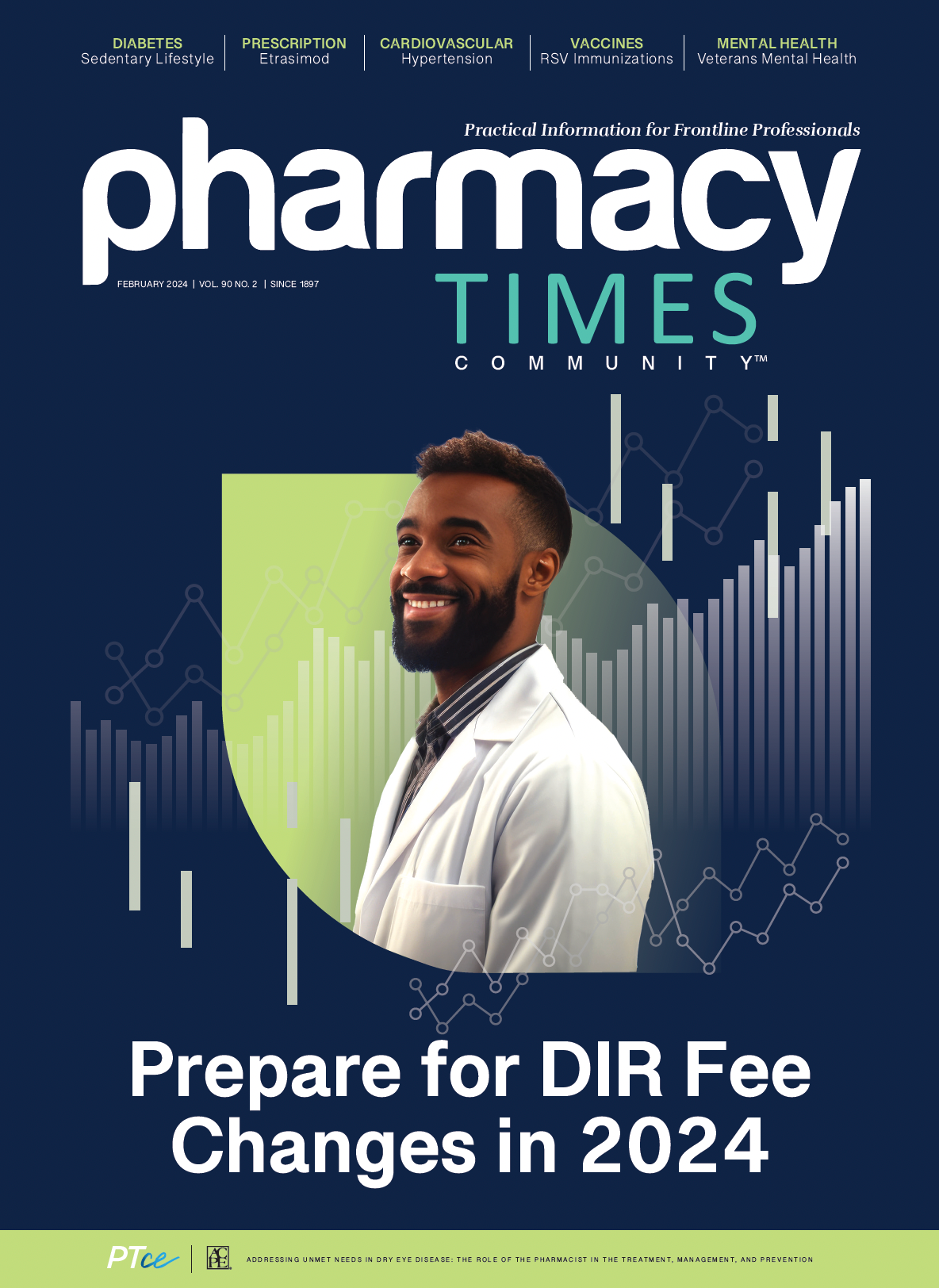Publication
Article
Pharmacy Times
Good Intentions Led to Disastrous Results for Community Pharmacies
The Medicare Modernization Act of 2023 provided pharmacy benefits to tens of millions of older and disabled Americans and created an unsustainable reimbursement model
TWENTY YEARS ON, MEDICARE PROVIDES MORE AFFORDABLE MEDICATIONS FOR 60 MILLION AMERICANS
The Medicare Prescription Drug, Improvement, and Modernization Act (MMA) of 2003 ushered in a pharmacy (drug) benefit that now provides lower out-of-pocket costs for the nearly 20% of Americans who are enrolled in Medicare.1 Though roughly one-third of currently practicing pharmacists were not employed when the Part D benefit was implemented in 2006,2 most of us older pharmacists remember what a pre-MMA, pre–Part D world looked like. Approximately 17% of Americans lacked a pharmacy benefit because of a lack of health insurance,3 leading to a marketplace where 35% to 40% of Americans paid out of pocket for medications.4 As of 2019, that “cash pay” portion of the total prescription fill market stood only at 5%.5
Image credit: Vitalii Vodolazskyi | stock.adobe.com

A FAILURE TO FIX FATAL FLAW OF OBRA '90
The Omnibus Budget Reconciliation Act of 1990 (OBRA ’90) mandated that pharmacies provide dispensing services to Medicaid recipients as part of dispensing fees. In last month’s Editor’s Note, we illustrated why this requirement spread to all payer types and board of pharmacy mandates for all patients receiving prescriptions, even if the dispensing fee is paltry or nonexistent. This leads to the question, “Can you really safely ensure that patients receive the right medication, at the right dose, with the right instructions, that fits with all of their conditions and other medications, for just $0.65 reimbursement?”
When the politics of the turn of the century could no longer allow Medicare to go without a pharmacy benefit for all its enrollees, there was an opportunity to remedy past policy errors (like not including pharmacists as health care providers in the Social Security Act amendments). That did not occur. In fact, something much worse resulted from MMA legislation and subsequent implementation: the pretension of services through what was termed “Part D Medication Therapy Management” (MTM). This strategy was neither funded nor provided to most Medicare enrollees, and for those few who have received these services, the quality and effectiveness have been dubious.
A FAILURE TO MODERNIZE REINFORCES A BROKEN MODEL OF (LACK OF) CARE DELIVERY
Although the MMA brought Medicare in line with most other insurance products providing some level of coverage for medications, it failed to recognize in any meaningful way that the population most susceptible to medication misadventures, polypharmacy, and suboptimal medication use would be well served by a care delivery benefit—not a Part D Plan that rightly prioritizes prescription filling objectives (it is a drug benefit, after all) instead of service delivery and patient outcomes. Medicare recipients with multiple chronic illnesses see an average of 13 unique prescribers every year, fill more than 50 unique medications, are responsible for 76% of hospitalizations, and their likelihood of hospitalization is 100 times higher.6 Despite this, no benefit for them to avoid medication-related problems has been provided.
"CHOICE" RESULTS IN RACE TO THE RETAIL BOTTOM, LACK OF ACCESS TO CARE
The MMA has been very successful in implementing a medication coverage benefit provided by private plans, which has produced an overall out-of-pocket reduction in costs (relative to inflation) for Medicare enrollees, especially those using very high-cost medications. However, there is no real “choice” in benefits if all the products are simply manifestations of the cheapest way to get the medications. It really is not much different from picking a discount card, and efforts to create a service- (through targeted and narrowly defined MTM) or outcomes-based marketplace (based not on prescription fill patterns, but rather quality measures) have failed.
In fact, MMA of 2003 is arguably the largest causative agent responsible for driving pharmacy practice to the point of breaking, with pharmacy staff now initiating walkouts due to patient safety concerns, thanks to skeleton staffing because of abysmal to nearly absent reimbursement for safe and effective dispensing services.
LET THE MEDICATION EXPERTS LEAD SERVICES THAT OPTIMIZE MEDICATIONS
Pharmacists are the drug experts. They are in the best position to assess, monitor, and optimize medication use for the chaotic medication experience Medicare enrollees endure. Ninety percent of patients fill their medications in a community pharmacy. Those lines in the pharmacy, that horrible customer service, that unsafe model of reimbursement leading to unsafe prescription filling and walkouts—it all stems from treating prescriptions like shampoo or cereal. Remedy that and not only do you remedy the business model, but you improve care dramatically.
LET MEDICARE RECIPIENTS DECIDE WHEN THEY NEED CARE, JUST LIKE EVERY OTHER PROVIDER
Pharmacies do not lean into Part D MTM because the lack of scale and the current provider-to-return economics for a given encounter result in a net loss or, at best, break even after labor and administration. They do not pay their staff bonuses on proportion of days covered measures because they have no faith that it produces better care for the patients they see—and, frankly, switching to a 90-day supply is the most effective way to game the equation (even the plans now mandate it). Likely less than $2 per Medicare enrollee per year is spent on care delivery at the pharmacy, and perhaps less than $1.*
Just let us provide care.
About the Author
Troy Trygstad, PharmD, PhD, MBA, is the executive director of CPESN USA, a clinically integrated network of more than 3500 participating pharmacies. He received his PharmD and MBA degrees from Drake University and a PhD in pharmaceutical outcomes and policy from the University of North Carolina. He recently served on the board of directors for the Pharmacy Quality Alliance and the American Pharmacists Association Foundation.
References
- Keisler-Starkey K, Bunch LN, Lindstrom RA. Health insurance coverage in the United States: 2022. US Census Bureau. September 12, 2023. Accessed January 22, 2024. https://www.census.gov/library/publications/2023/demo/p60-281.html
- Mikulic M. Number of pharmacists in the U.S. from 2001 to 2022. Statista. June 12, 2023. Accessed January 22, 2024. https://www.statista.com/statistics/185723/number-of-pharmacists-in-the-ussince-2001/
- Ochieng N, Biniek JF, Freed M, Damico A, Neuman T. Medicare Advantage in 2023: enrollment update and key trends. KFF. August 9, 2023. Accessed January 22, 2024. https://www.kff.org/medicare/issue-brief/medicare-advantage-in-2023-enrollment-update-and-key-trends/
- Roberts M, Rhoades JA. Statistical brief #171: the uninsured in America, first half of 2006: estimates for the US civilian noninstitutionalized population under age 65. Agency for Healthcare Research and Quality. June 2007. Accessed January 22, 2024. https://meps.ahrq.gov/data_files/publications/st171/stat171.shtml
- Tegtmeier W. More patients turning to cash pharmacies and discount cards. Rx Savings Solutions. April 28, 2023. Accessed January 22, 2024. https://rxss.com/blog/growth-in-cash-pharmacies-discount-cards/
- Patient-Centered Primary Care Collaborative. The Patient-Centered Medical Home: Integrating Comprehensive Medication Management to Optimize Patient Outcomes Resource Guide. 2nd ed. PCPCC. June 2012. Accessed January 22, 2024. https://thepcc.org/sites/default/files/media/medmanagement.pdf
* We have not seen any published studies about the amount and percentage of dollars that find their way to pharmacy providers for Part D MTM services. I wonder why? Feel free to correct us and we will publish your findings.


FDA Approves Dupilumab, Marking First Targeted Therapy in a Decade for Chronic Spontaneous Urticaria




